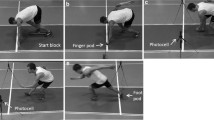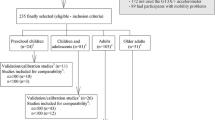Abstract
The aim of this study is to assess the impact of aging process in gait variability. Stride interval variability is estimated by using two approaches: (1) a non-linear fractal analysis (detrended fluctuation analysis) which evaluates the presence of long-range correlations in stride interval time series; and (2) a statistical dispersion measure (coefficient of variation) to quantify the magnitude of the stride interval fluctuations. Two groups of physically independent older adults, with different walking ability, have participated in the gait trials performed in an elderly care home. The estimated stride interval variability of the elders is compared to each other and to the variability coming from a young adult group used as control. To accomplish this, an infrastructure which uses wearables to acquire inertial data from the trunk of each participant is provided. Stride interval time series are made up of the estimated heel-strike events from previous inertial data. In addition, a service segments straight paths within the gait trials, discarding turns. The stride intervals from the segmented straight paths are stitched together to produce the long time series required to analyze gait variability. Despite the study has not provided conclusive results from an individual perspective, finding older adults who have less stride interval variability than younger ones. The inter-class analysis conducted has shown interesting findings about the relation between the subjective characterization of gait, aging and stride interval variability estimated through the two proposed approaches.








Similar content being viewed by others
Notes
Intraclass Correlation Coefficient.
6 Degrees of Freedom Inertial Measurement Unit, composed by a triaxial accelerometer and a triaxial gyroscope.
T1. First (1st) thoracic vertebra.
Wireless Local Area Network.
Inter-Integrated Circuit data serial bus.
Message Queuing Telemetry Transport (MQTT). It is a lightweight application protocol on top of the TCP/IP protocol. It is based on publication/subscription policies to defined messages, known as topics.
Internet of Things.
Rotation around the vertical axis.
Root-Mean-Square Deviation.
References
Acharya UR, Bhat S, Faust O, Adeli H, Chua ECP, Lim WJE, Koh JEW (2015) Nonlinear dynamics measures for automated EEG-based sleep stage detection. Eur Neurol 74:268–287. https://doi.org/10.1159/000441975
Antonsson EK, Mann RW (1985) The frequency content of gait. J Biomech 18(1):39–47. https://doi.org/10.1016/0021-9290(85)90043-0
Bartsch R, Plotnik M, Kantelhardt JW, Havlin S, Giladi N, Hausdorff JM (2007) Fluctuation and synchronization of gait intervals and gait force profiles distinguish stages of Parkinson’s disease. Phys A 383(2):455–465. https://doi.org/10.1016/j.physa.2007.04.120
Beauchet O, Herrmann FR, Grandjean R, Dubost V, Allali G (2008) Concurrent validity of SMTEC® footswitches system for the measurement of temporal gait parameters. Gait Posture 27(1):156–159. https://doi.org/10.1016/j.gaitpost.2006.12.017
Bhaduri A, Ghosh D (2016) Quantitative assessment of heart rate dynamics during meditation: an ECG based study with multi-fractality and visibility graph. Front Physiol. https://doi.org/10.3389/fphys.2016.00044
Bollens B, Crevecoeur F, Nguyen V, Detrembleur C, Lejeune T (2010) Does human gait exhibit comparable and reproducible long-range autocorrelations on level ground and on treadmill? Gait Posture 32(3):369–373. https://doi.org/10.1016/j.gaitpost.2010.06.011
Brach JS, Perera S, Studenski S, Newman AB (2008) The reliability and validity of measures of gait variability in community-dwelling older adults. Arch Phys Med Rehabil 89(12):2293–2296. https://doi.org/10.1016/j.apmr.2008.06.010
Buzzi UH, Stergiou N, Kurz MJ, Hageman PA, Heidel J (2003) Nonlinear dynamics indicates aging affects variability during gait. Clin Biomech 18(5):435–443. https://doi.org/10.1016/s0268-0033(03)00029-9
Chau T, Young S, Redekop S (2005) Managing variability in the summary and comparison of gait data. J NeuroEng Rehabil 2(1):1–22. https://doi.org/10.1186/1743-0003-2-22
Chen Z, Ivanov PC, Hu K, Stanley HE (2002) Effect of nonstationarities on detrended fluctuation analysis. Phys Rev E 65(4):041–107. https://doi.org/10.1103/physreve.65.041107
Chien JH, Yentes J, Stergiou N, Siu KC (2015) The effect of walking speed on gait variability in healthy young, middle-aged and elderly individuals. J Phys Act Nutr Rehabil. http://www.panr.com.cy/index.php/article/the-effect-of-walking-speed-on-gait-variability-in-healthy-young-middle-aged-and-elderly-individuals. Accessed 27 Oct 2017
Delignieres D, Ramdani S, Lemoine L, Torre K, Fortes M, Ninot G (2006) Fractal analyses for ‘short’ time series: a re-assessment of classical methods. J Math Psychol 50(6):525–544. https://doi.org/10.1016/j.jmp.2006.07.004
Dutta S, Ghosh D, Samanta S (2016) Non linear approach to study the dynamics of neurodegenerative diseases by multifractal detrended cross-correlation analysis. A quantitative assessment on gait disease. Phys A 448:181–195. https://doi.org/10.1016/j.physa.2015.12.074
Gates DH, Dingwell JB (2007) Peripheral neuropathy does not alter the fractal dynamics of stride intervals of gait. J Appl Physiol 102(3):965–971. https://doi.org/10.1152/japplphysiol.00413.2006
Golińska AK (2012) Detrended fluctuation analysis (DFA) in biomedical signal processing: selected examples. Stud Logic Gramm Rhetor 29(42):107–115
González I, Fontecha J, Hervás R, Bravo J (2016a) Estimation of temporal gait events from a single accelerometer through scale-space filtering. J Med Syst 40(12):251. https://doi.org/10.1007/s10916-016-0612-4
González I, Fontecha J, Hervás R, Naranjo M, Bravo J (2016b) A proposal for long-term gait monitoring in assisted living environments based on an inertial sensor infrastructure. In: Ubiquitous computing and ambient intelligence (UCAmI 2016), Lecture notes in computer science, vol 10069. Springer, Cham, pp 300–305. https://doi.org/10.1007/978-3-319-48746-5_31
Hausdorff JM (2007) Gait dynamics, fractals and falls: finding meaning in the stride-to-stride fluctuations of human walking. Hum Mov Sci 26(4):555–589. https://doi.org/10.1016/j.humov.2007.05.003
Hausdorff JM (2009) Gait dynamics in Parkinsons disease: common and distinct behavior among stride length, gait variability, and fractal-like scaling. Chaos. https://doi.org/10.1063/1.3147408
Hausdorff JM, Peng CK (1996) Multiscaled randomness: a possible source of 1/f noise in biology. Phys Rev E 54(2):2154–2157. https://doi.org/10.1103/physreve.54.2154
Hausdorff JM, Peng CK, Ladin Z, Wei JY, Goldberger AL (1995) Is walking a random walk? Evidence for long-range correlations in stride interval of human gait. J Appl Physiol 78(1):349–358
Hausdorff JM, Purdon PL, Peng CK, Ladin Z, Wei JY, Goldberger A (1996) Fractal dynamics of human gait: stability of long-range correlation in stride interval fluctuations. J Appl Physiol 80(5):1448–1457
Hausdorff JM, Mitchell SL, Firtion RE, Peng CK, Cudkowicz ME, Wei JY, Goldberger A (1997) Altered fractal dynamics of gait: reduced stride-interval correlations with aging and Huntington’s disease. J Appl Physiol 82(1):262–269
Hausdorff JM, Lertratanakul A, Cudkowicz ME, Peterson AL, Kaliton D, Goldberger AL (2000) Dynamic markers of altered gait rhythm in amyotrophic lateral sclerosis. J Appl Physiol 88(6):2045–2053
Hausdorff JM, Ashkenazy Y, Peng CK, Ivanov PC, Stanley HE, Goldberger AL (2001) When human walking becomes random walking: fractal analysis and modeling of gait rhythm fluctuations. Phys A 302(1–4):138–147
Herman T, Giladi N, Gurevich T, Hausdorff JM (2005) Gait instability and fractal dynamics of older adults with a ‘cautious’ gait: why do certain older adults walk fearfully? Gait Posture 21(2):178–185. https://doi.org/10.1016/j.gaitpost.2004.01.014
Kalman RE (1960) A new approach to linear filtering and prediction problems. J Basic Eng 82(1):35–45. https://doi.org/10.1115/1.3662552
Kirchner M, Schubert P, Liebherr M, Haas CT (2014) Detrended fluctuation analysis and adaptive fractal analysis of stride time data in Parkinson’s disease: stitching together short gait trials. PLoS One 9(1):1–6. https://doi.org/10.1371/journal.pone.0085787
Lindemann U, Najafi B, Zijlstra W, Hauer K, Muche R, Becker C, Aminian K (2008) Distance to achieve steady state walking speed in frail elderly persons. Gait Posture 27(1):91–96. https://doi.org/10.1016/j.gaitpost.2007.02.005
Lord S, Howe T, Greenland J, Simpson L, Rochester L (2011) Gait variability in older adults: a structured review of testing protocol and clinimetric properties. Gait Posture 34(4):443–450. https://doi.org/10.1016/j.gaitpost.2011.07.010
Moe-Nilssen R, Aaslund MK, Hodt-Billington C, Helbostad JL (2010) Gait variability measures may represent different constructs. Gait Posture 32(1):98–101. https://doi.org/10.1016/j.gaitpost.2010.03.019
Moon Y, Sung J, An R, Hernandez ME, Sosnoff JJ (2016) Gait variability in people with neurological disorders: a systematic review and meta-analysis. Hum Mov Sci 47:197–208. https://doi.org/10.1016/j.humov.2016.03.010
Ota L, Uchitomi H, Suzuki K, Hove MJ, Orimo S, Miyake Y (2011) Relationship between fractal property of gait cycle and severity of Parkinson’s disease. In: 2011 IEEE/SICE international symposium on system integration (SII), pp 236–239, 23–25 Dec 2011, Kyoto, Japan. https://doi.org/10.1109/sii.2011.6147452
Paterson K, Hill K, Lythgo N (2011) Stride dynamics, gait variability and prospective falls risk in active community dwelling older women. Gait Posture 33(2):251–255. https://doi.org/10.1016/j.gaitpost.2010.11.014
Peng CK, Havlin S, Stanley HE, Goldberger AL (1995) Quantification of scaling exponents and crossover phenomena in nonstationary heartbeat time series. Chaos 5(1):82–87. https://doi.org/10.1063/1.166141
Perkiömäki JS (2011) Heart rate variability and non-linear dynamics in risk stratification. Front Physiol 2(81):1–8. https://doi.org/10.3389/fphys.2011.00081
Pierrynowski MR, Gross A, Miles M, Galea V, McLaughlin L, McPhee C (2005) Reliability of the long-range power-law correlations obtained from bilateral stride intervals in asymptomatic volunteers whilst treadmill walking. Gait Posture 22(1):46–50. https://doi.org/10.1016/j.gaitpost.2004.06.007
Schubert P (2013) The application of nonlinear methods to characterize human variability from time series. Dtsch Z Sportmed 64(5):132–140. https://doi.org/10.5960/dzsm.2012.064
Schwart MH, Trost JP, Wervey RA (2004) Measurement and management of errors in quantitative gait data. Gait Posture 20(2):196–203. https://doi.org/10.1016/j.gaitpost.2003.09.011
Terrier P, Turner V, Schutz Y (2005) GPS analysis of human locomotion: further evidence for long-range correlations in stride-to-stride fluctuations of gait parameters. Hum Mov Sci 24(1):97–115. https://doi.org/10.1016/j.humov.2005.03.002
Tinetti ME (1986) Performance-oriented assessment of mobility problems in elderly patients. J Am Geriatr Soc 34(2):119–126. https://doi.org/10.1111/j.1532-5415.1986.tb05480.x
Yeh RG, Shieh JS, Chen GY, Kuo CD (2009) Detrended fluctuation analysis of short-term rate variability in late pregnant women. Auton Neurosci 150(1–2):122–126. https://doi.org/10.1016/j.autneu.2009.05.241
Acknowledgements
This work is supported by the FRASE MINECO project (TIN2013-47152-C3-1-R) and the Plan Propio de Investigación program from Castilla-La Mancha University.
Author information
Authors and Affiliations
Corresponding author
Appendix A: measuring the straightness of a trajectory fragment
Appendix A: measuring the straightness of a trajectory fragment
The procedure tangentStraightness() presented in the flow diagram in Figure 6 is responsible for measuring the straightness of the trajectory enclosed by a fragment, to accomplish that the changes in the tangent to that piece of trajectory are computed; tangentStraightness() is mathematically defined as follows:
If the trajectory’s position at sample t is (x(t), y(t)), where x(t) is the timestamp and y(t) the yaw angle relative to this sample, then the tangent at this point is (dx(t), dy(t)), where dx(t) is the derivative of x at sample t. The tangent can be normalized dividing by ||(dx(t), dy(t))||. Therefore, an unit vector a(t) of the tangent to the trajectory at sample t is defined as:
In order to measure the straightness of the trajectory framed in a particular fragment, the focus is set on integrating \(||da(t)||^2\) along that portion of trajectory, where da(t) is the derivative of a at sample t. As our trajectories are sets of discrete data points rather than curves, finite differences must be used to approximate the derivatives. Therefore, a(t) becomes:
and da(t):
where the spacing parameter h, used in the finite differences, is initialized to 1 sample in this particular case. Then, we get a straightness value S by summing up \(h||da(t)||^2\) for all points/samples belonging to the trajectory framed in a fragment:
To reiterate, S will be zero for an ideal straight line and larger the more the trajectory enclosed by the fragment deviates from a line. We fix a threshold for S (\(S>0.01\)) in order to determine if the current fragment of trajectory under analysis is not considered straight, in other words, if it contains an abrupt change in direction or not.
Rights and permissions
About this article
Cite this article
González, I., Fontecha, J. & Bravo, J. Relationship between stride interval variability and aging: use of linear and non-linear estimators for gait variability assessment in assisted living environments. J Ambient Intell Human Comput 10, 2095–2109 (2019). https://doi.org/10.1007/s12652-017-0608-z
Received:
Accepted:
Published:
Issue Date:
DOI: https://doi.org/10.1007/s12652-017-0608-z




